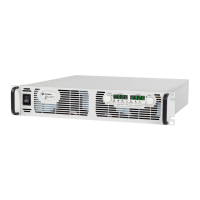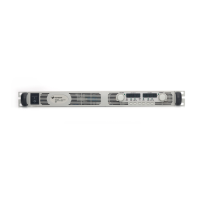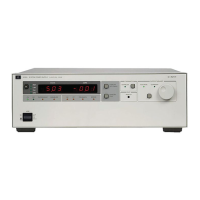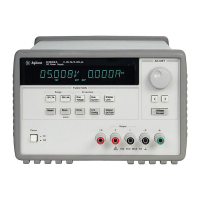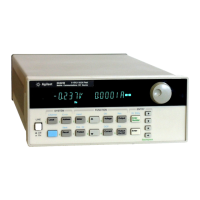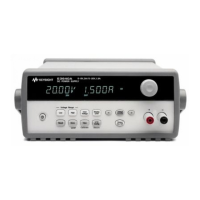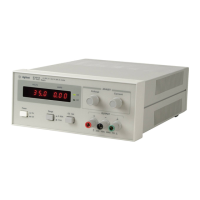5 Introduction to Programming
74 Series N6700 User’s Guide
SCPI Command Completion
SCPI commands sent to the power system are processed either
sequentially or in parallel. Sequential commands finish execution
before a subsequent command begins. Parallel commands allow other
commands to begin executing while the parallel command is still
executing.
The following is a list of parallel commands. You should use some
form of command synchronization as discussed in this section before
assuming that these commands have completed.
OUTPut:STATe INITiate
VOLTage OUTPut:PROTection:CLEar
CURRent FUNCtion:MODE
The *WAI, *OPC, and *OPC? common commands provide different
ways of indicating when all transmitted commands, including any
parallel ones, have completed their operations. Some practical
considerations for using these commands are as follows:
*WAI
This command prevents the power system from processing subsequent
commands until all pending operations are completed. For example,
the *WAI command can be used to make a current measurement after
an output on command has completed:
OUTPut ON,(@1);*WAI;:MEASure:CURRent? (@1)
*OPC?
This command places a 1 in the Output Queue when all pending
operations have completed. Because it requires your program to read
the returned value before executing the next program statement,
*OPC? can be used to cause the controller to wait for commands to
complete before proceeding with its program.
*OPC
This command sets the OPC status bit when all pending operations
have completed. Since your program can read this status bit on an
interrupt basis, *OPC allows subsequent commands to be executed.
NOTE
The trigger subsystem must be in the Idle state for the status OPC bit to be
true. As far as triggers are concerned, OPC is false whenever the trigger
subsystem is in the Initiated state.
Device Clear
You can send a Device Clear at any time to abort a SCPI command
that may be hanging up the GPIB interface. Device Clear clears the
input and output buffers of the power system and prepares the
power system to accept a new command string. The status registers,
error queue, and all configuration states are left unchanged by Device
Clear. The following statement shows how to send a device clear over
the GPIB interface using Agilent Basic:
CLEAR 705 IEEE-488 Device Clear
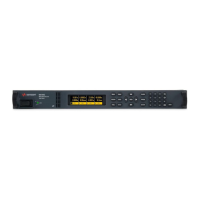
